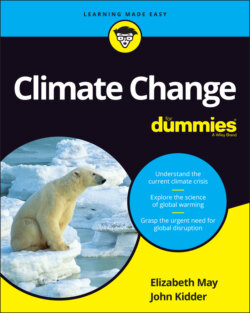Читать книгу Climate Change For Dummies - Elizabeth May - Страница 55
Methane stabilized for a while — still it didn’t
ОглавлениеMethane levels in the atmosphere had stabilized at 1.8 parts per million, but since the first printing of this book, record growth in methane has been experienced globally. In 2021, smashing previous records methane grew to 1.9 parts per million.
Much of this increase was due to the use of novel technology (referred to as hydraulic fracturing or fracking) to get gas out of bedrock formations like shale. The boom in natural gas fracking has accelerated the move away from coal by electric utilities in the United States and Canada. But it isn’t clear win for the climate. (Read more about using natural gas as a fuel in Chapter 4.)
Fracking threatens water quality with chemical contamination, and research has shown that it has even caused in increase in earthquakes. Turning the Earth into a pincushion has some worrying side effects: The process of fracking bombards the bedrock formations with jets of water, containing special chemicals to get the gas out of the substrate and into pipelines headed to making liquified natural gas (LNG). The process of fracking uses so much energy that even though using LNG for energy at the end point is relatively clean, the so-called upstream (or process of extraction of LNG) has the same GHG impact as burning coal.
A lot of methane is frozen into the ground of the Arctic, trapped by the permafrost (any ground that remains completely frozen for more than two years). Rising northern temperatures, however, are melting the soil. When the Arctic land thaws, it becomes swampland — and it starts dishing out methane like hotcakes. We look at this problem in greater detail in Chapter 7.
